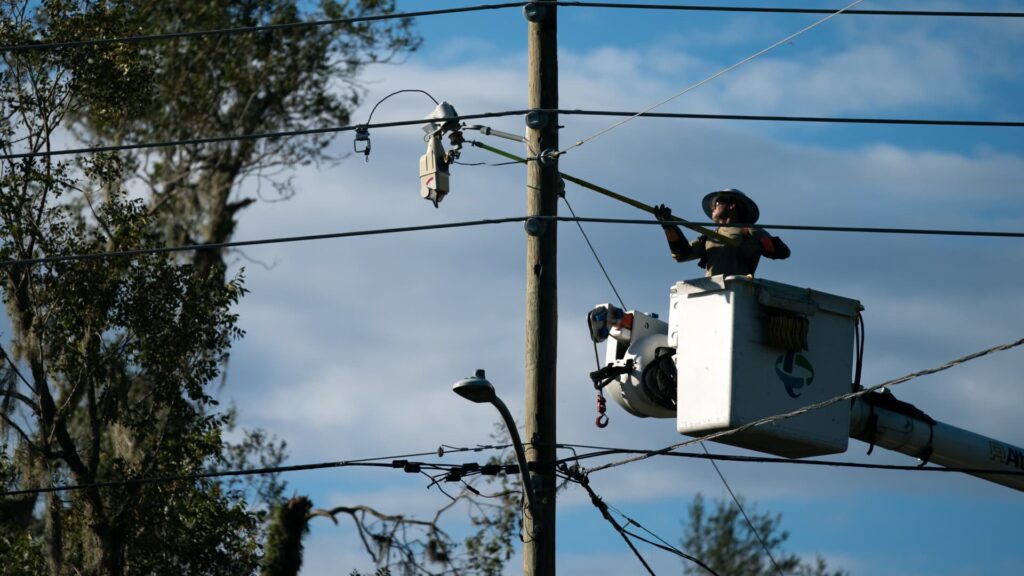Before a hurricane such as the recent Hurricane Idalia makes landfall, consumers typically load up on flashlights, batteries and plywood from chains such as Home Depot and Lowe’s , or might try and buy a generator from Generac . But behind the scenes, there are a host of companies that benefit from the cleanup and rebuilding that follows natural disasters. This year’s Atlantic hurricane season is running above average compared to prior years, with 14 storms, four hurricanes and three major hurricanes so far. Hurricane Lee, which was a category 1 hurricane as of Friday morning, grew in size as it traveled toward New England and Canada this week. As climate change feeds extreme weather, the number of billion-dollar disasters also increases, benefiting some companies and hurting others. In 2022, the U.S. experienced 18 weather and climate disasters which cost at least $1 billion each. “The frequency of extreme hurricanes seems to be becoming more regular,” said Andrew Chanin, who has run the Procure Disaster Recovery Strategy ETF since it opened in June 2022. “To the extent that we should be expecting more intense hurricane seasons, that makes investors and makes individuals wonder if they’re doing enough” to prepare. The ETF, with just $2.2 million in assets, tracks companies that help mitigate or recover from natural disasters, such as hurricanes, wildfires, floods or earthquakes, and is up almost 19% this year — better than the S & P 500’s 16.2% gain. The companies in its portfolio tend to benefit from extreme weather occurrences. Some of them can be pretty obscure. FIXT YTD mountain Procure Disaster Recovery Strategy ETF in 2023 Under the radar stocks like Houston-based Sterling Infrastructure and AtkinsRéalis , formerly SNC-Lavalin Group, a Canadian engineering and construction company, can benefit from these disasters. Both are among Chanin’s biggest holdings, according to Morningstar. Shares of Sterling Infrastructure are up 125% in 2023 and are rising for a fifth straight year, bringing its market value to $2.3 billion. The handful of analysts who cover the infrastructure services provider give it a median rating of overweight with an $87 price target, according to FactSet, implying another 18% upside over the next year. Sterling beat analyst estimates when it posted second quarter results in August, reporting 13% revenue growth, 30% higher EBITDA , expansion in each of its business units: e-infrastructure, transportation and building solutions and increased earnings and sales guidance. AtkinsRéalis is another big winner, up 84% this year. The recently rebranded company—which last month projected organic revenue growth of as much as 15% this year—is plotting acquisitions beginning next year in the U.S. northeast and northwest, according to Bloomberg. The average analyst rating on AtkinsRéalis is overweight and the price target implies about 9% upside. “Roughly one-third of the entire financial toll from natural disasters occurs in the United States…so to the extent that they can increase their footprint …that might be a way to get more access to various contracts,” Chanin said. Another ETF holding is Sulzer , a Swiss industrial engineering and manufacturing firm. The fluid engineering and chemical processing has gained 30% this year, has a median rating of overweight and a price target implying 10% further upside, according to FactSet. Great Lake Dredge & Dock and Clean Harbors are other companies Chanin pointed to as strong disaster recovery names. To be sure, many analysts say the likeliest beneficiaries are still big box retailers Americans customarily use to prepare for a disaster, with Citigroup researchers pointing to chains such as Lowe’s, Tractor Supply , Home Depot and Floor & Decor Holdings .
Read the full article here



